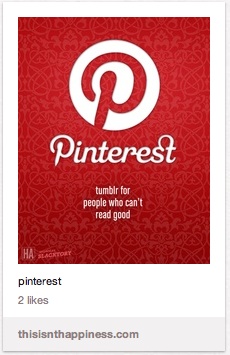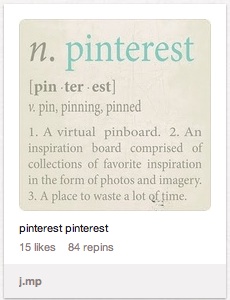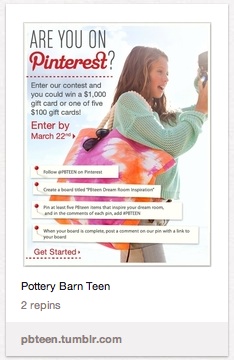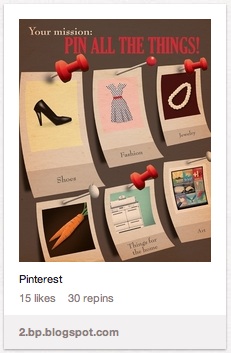
| Pinterest defines itself as "a virtual pinboard to organize and share
the things you love." It could easily be seen as personalized online
gallery or archive, but it also fits into Kristina DeVoe's definition of
microblogging as an internet environment that "lets users share brief
blasts of information...to friends and followers from multiple sources" (212).
As the fastest stand-alone site to reach 10 million unique visitors a month, Pinterest is receiving a lot of media attention (Delo). Magazines, clothing brands, booksellers, bloggers, nonprofits, universities, fast food chains, hotels, restaurants, and even newspapers are using the site for marketing. Each pin is a link back to the site from which it was pinned, so it is an excellent way to generate traffic for any website. | 
|

